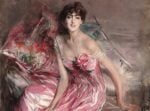Antonio Labalestra – Storie in discreto disordine
.jpg)
Mostra fotografica
Comunicato stampa
Stories in discrete disorder.
Imaginary architecture and places of collective memory
A show of photo-montages and works by Antonio Labalestra
On Tuesday, December 10th, 2013 at 19.30, at the Galleria Spazio Giovani in the ancient city of Bari, the show titled "Stories in discrete disorder. Architectures and imaginary places of collective memory" by Antonio Labalestra will inaugurate, an exhibition of photomontages and works, edited by Caterina Rinaldo.
The attitude to architectural photomontage is the subject of renewed interest among contemporary architects which mode of study and research of the relationships between the object and the city, between the place and its historical significance, such as the practice of questioning the certainties consolidated and opening up new research perspectives.
However, the intent of this exhibition is not comparable to the designer's work but the to slow investigation of the historian who does not create, but rather dissects and then reconnect the parties, investigates relationships and builds new matches by logical correlations so that narratives emerge, identifying the implicit bond space time-between place and event.
Labalestra does not add anything, do not interfere, do not edit, re-read and relates to the parties, let them dialogue and interact. The author recompose by studying them to recognize what they have in common just like it does in the game of dominoes; gives life, as he writes in Franco Purini Comporre l’architettura, "to architectural visions in which he depicts the unexpected, the unknown, the surprising. These images resulting from an act of pure imagination, which, in spite of that origin, intermediate between the dream and the memory of something lost, can often reveal the most hidden and often more illuminating of reality".
The exhibition, which reflects in detail on the relationship between architecture and literature, is a play on words, a complex mental mechanism through which to try to read, visual connections identified in the relations existing between the parties, a path similarities of historical connections often distant and unexpected. And the summa of history itself that is staged with its complex temporal stratification.
Sixteen square format images become sixteen unique works, documents in which the elements are placed in relation to research references that add up to more autobiographical levels: from his own the personal ego to that of a generation of theorists and designers united by a common training matrix culture. "There are places", again to quote Purini, "in which the error as a result of random mistakes and unexpected language produces lightning associations of ideas, meaning, hybridizations, unexpected combinations of signs, combinations of seemingly incongruous elements, detectors actually a hidden order of things".
So the Melencolia by Albrecht Dürer becomes the anticipation of the fall in the decay of the archistars of contemporary architecture, while the political denunciation of the charcoal factory in Battersea, symbolically stigmatized by the tire Orwellian pig , a symbol of policy despotic and
ruthless, translates the perfect image desired by Pink Floyd for the cover of Animals, a mere icon to Jeff Koons through the inclusion of the Tate Gallery Herzog & De Meuron, which appears in place of the industrial building , but in fact it is as if always been there. But it is also when you redesign, the lesson of the story comes into play relations between the parties, so the project for the extension of the National Library in Paris by Etienne Boullée becomes an excuse for the overturning of a culture that may not be based on more solid bases.
It is, however, the enigma Alberti's winged eye, the key to understand how much there is yet to be studied to understand the secret relationship between things . The aspiration to ideals that can only come from the unveiling of the meanings against the appearance of reality mystified.
Explicanda sunt misteria.
Inside the events taking place at the show on Saturday, December 14th, 2013 at 18.30 the author held a keynote on the theme, "Architectura ficta. Monumental autobiography out of necessity eclectic" dedicated to the lesson of the avantgarde as a precursor of a new architecture designed.
Antonio Labalestra was born in Turin. He graduated in Architecture with a degree in Architectural History and Theory of Design with prof. Pippo Ciorra, prof. Francesco Moschini and prof. Franco Purini. Since 2000 he has been teaching courses in the History of Architecture and Contemporary Art History at the Polytechnic of Bari. Follows institutionally the European Master 's Degree in History of Architecture at the University of Roma Tre and Improvement in theoretical and aesthetic philosophies of the twentieth century in the departments of Romance Languages and Literatures and of Italian and Mediterranean University degli Studi di Bari. Since 2004 collaborates with the designs of the Fund Francesco Moschini Archive A. A. M. Architecture Modern Art for the Arts, Sciences and Architecture having the opportunity to watch, from a vantage point, a series of exhibitions dedicated to architecture and the arts, and authors of the 900. He has organized, coordinated and edited seminars, lectures, film festivals, exhibitions and events in Italy and abroad. He teaches and popularizes exercises through interventions and public meetings, study days and conferences, he adds intense publishing activity through the editing of books, journals and speeches and specialized media. He is the author of essays, articles and reviews devoted primarily to the relationship between art and architecture and history, theory and design , with independent publications and journals of Italian architecture, such as: "XY dimensioni del disegno", "Segno", "L'industria delle costruzioni ","Paesaggio urbano", "Disegnare idee immagini" and "Progetti".
Stories in discrete disorder. Imaginary architecture and places of collective memory,
di Antonio Labalestra con la collaborazione di Daniela Idda.
Editing by Caterina Rinaldo.



